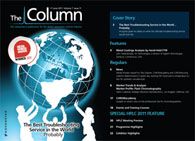Tackling fish fraud
Fraud in the fisheries sector can range from low-cost catfish sold as expensive sole to cod caught in the North Sea but declared as originating from the Baltic.
Fraud in the fisheries sector can range from low-cost catfish sold as expensive sole to cod caught in the North Sea but declared as originating from the Baltic. A report from the European Commission has highlighted some of the ways that molecular technologies based on genetics, genomics, chemistry and forensics can be used by investigators to help in the fight against illegal practices and support traceability.
The report is by the commission’s Joint Research Centre (JRC) and is titled “Deterring illegal activities in the fisheries sector”. Máire Geoghegan-Quinn, European Commissioner for Research, Innovation and Science and the commissioner with lead responsibility for the JRC said, “This crucial report by the Commission’s in-house scientists at the JRC shows how the wider and more coordinated use of innovative molecular technologies can help foil fisheries fraud and make sure consumers get what they pay for and know what they are eating.”
The report advocates an EU-wide approach to make new molecular technologies available to European control and enforcement authorities. Among the proposals in the report, it is suggested that analytical laboratories in the Member States are given access to common repositories of reference data and other relevant knowledge for analysis. It also proposes a network of certified test laboratories that can perform analysis for control and enforcement purposes and to share harmonized and validated analytical protocols.
This story originally appeared in The Column. Click here to view that issue.
New Study Reviews Chromatography Methods for Flavonoid Analysis
April 21st 2025Flavonoids are widely used metabolites that carry out various functions in different industries, such as food and cosmetics. Detecting, separating, and quantifying them in fruit species can be a complicated process.
Analytical Challenges in Measuring Migration from Food Contact Materials
November 2nd 2015Food contact materials contain low molecular weight additives and processing aids which can migrate into foods leading to trace levels of contamination. Food safety is ensured through regulations, comprising compositional controls and migration limits, which present a significant analytical challenge to the food industry to ensure compliance and demonstrate due diligence. Of the various analytical approaches, LC-MS/MS has proved to be an essential tool in monitoring migration of target compounds into foods, and more sophisticated approaches such as LC-high resolution MS (Orbitrap) are being increasingly used for untargeted analysis to monitor non-intentionally added substances. This podcast will provide an overview to this area, illustrated with various applications showing current approaches being employed.

.png&w=3840&q=75)

.png&w=3840&q=75)



.png&w=3840&q=75)



.png&w=3840&q=75)








